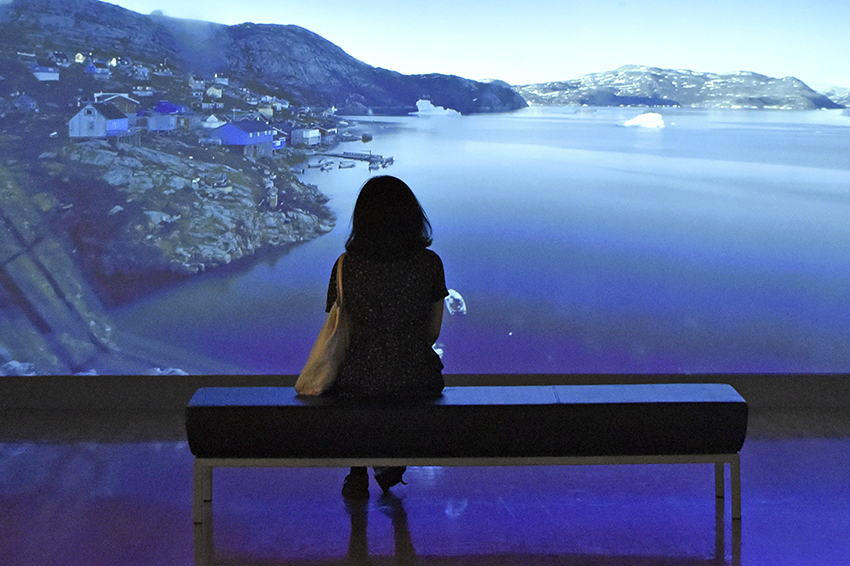Science visualizations often include crowded graphs and definition heavy videos but at UT, presenting research can be art.
Exploring the Arctic Ocean is a collection of eight projects currently on display in the Visual Arts Center and includes time lapses, a spinning map, a giant copper man and 3D printed sea ice. The exhibit raises questions on the changing arctic environment and explores how politics, activism, scientific research and cultural endurance all come into play when viewing the globe from above.
The exhibit addresses polar amplification, a phenomenon where the poles, specifically the Arctic, experience the effects of global warming far more dramatically than the rest of the world, according to Patrick Heimbach, co-principal investigator of a featured project.
The exhibition’s curator Ulrike Heine said that the projects, although separate, are meant to relate to each other.
“I feel they (the projects) are really pieces in a big puzzle, (that) hopefully engage with each other and create an interesting dialogue,” Heine said.
The exhibit centers around “Arctic Atlantification,” a research project displayed as a data visualization with two videos: one a trance-inducing artistic video and the other an explanatory video. The explanatory video synthesizes data on surface temperature, salinity and current speed to track warm water’s movement from the Atlantic Ocean into the Arctic, or “Arctic Atlantification.” This project will serve as a baseline understanding for further research on Arctic warming, according to principal investigator An Nguyen.
Nguyen said the project aims to understand how an increase in heat flux affects the Arctic. She added that the explanatory video represents the transparency of the project.
“We want to make it clear to you: This is how we arrived at what you see on the wall and we don’t fudge things, we don’t make (anything) up along the way,” Nguyen said.
Heimbach added that it does not matter if viewers do not understand the exact science outlined in the explanatory video as long as they understand that the science is thorough.
Heine offers an alternative view.
“The explanatory piece also reflects our classes communicating about the science and trying to educate each other,” Heine said.
Lize Mogel, whose featured project, Area of Detail, analyzes the politics of Arctic land rights, said an exhibit that communicates research in different ways is important in making complex topics accessible.
“The Arctic is a complex place and it needs interpretation in all sorts of ways,” Mogel said.
Olaf Otto Becker, whose photo series Broken Line is sampled in the exhibit, said that a lack of a common understanding is a barrier to solving global climate change.
“We still don’t speak the same language,” Becker said. “There are different cultures, different political systems, other different problems. We have to sit around the same table, all countries, to discuss how we can manage it.”
The exhibit immortalizes this reciprocal communication between fields and a merging of scientific and artistic languages.
“Communities (speak) different languages, and you don’t talk to each other because one uses a certain set of jargons the other uses their own jargons … but what we want to do right now is see if we can reach across the line and do that,” Nguyen said.
The exhibit is open to the public at the Visual Arts Center on campus Tuesdays through Fridays from 10 a.m. to 5 p.m. and Saturdays from noon to 5 p.m. Numerous public events accompany and complement the exhibit, including an upcoming panel of artists and scientists on Thursday, Oct. 11 at 5:30 p.m. in the Art Building and Museum building.















